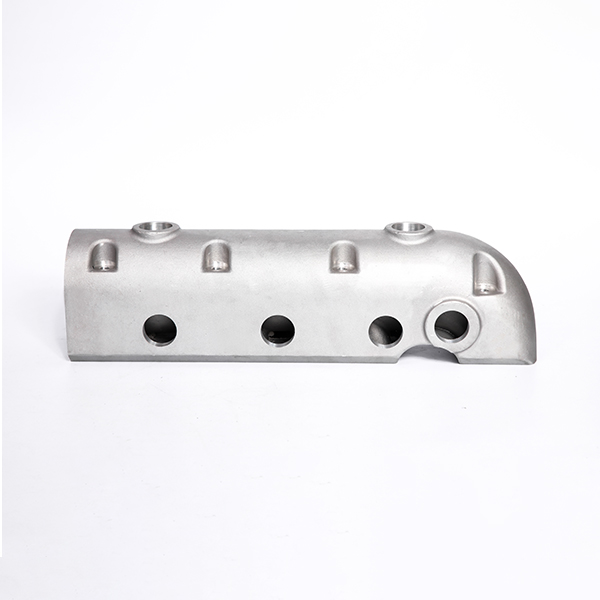Mobile:+86-311-808-126-83
Email:info@ydcastings.com
ss foundry
The Evolution of SS Foundry An Insight into Modern Metal Casting
The world of metal casting has evolved significantly over the years, with advancements in technology and technique paving the way for more efficient and sustainable practices. Among the various methods used for metal fabrication, SS foundry—short for stainless steel foundry—has carved a niche for itself in industries ranging from automotive to aerospace. This article delves into the intricacies of SS foundries, exploring their processes, advantages, and the future of stainless steel casting.
Understanding SS Foundries
A stainless steel foundry specializes in the production of stainless steel castings. Stainless steel is an alloy known for its excellent corrosion resistance, durability, and aesthetic appeal. These properties make it an ideal material for various applications, including kitchenware, medical devices, and structural components in buildings and machinery.
The process of creating stainless steel castings typically involves several key stages pattern making, mold making, melting, pouring, and finishing. Each stage requires precision and expertise to ensure the quality of the final product.
The Casting Process
1. Pattern Making The first step is to create a pattern of the desired metal object, often made from wood, metal, or plastic. This pattern serves as a blueprint for creating a mold.
2. Mold Making Once the pattern is ready, it is used to create a mold, which will form the shape of the final casting. The mold can be made from various materials, including sand, metal, or ceramic, depending on the casting method used.
3. Melting and Pouring The stainless steel is then melted in a furnace at high temperatures. Once molten, it is poured into the mold. This step requires careful control of temperature and timing to ensure that the steel flows properly and fills the mold completely.
4. Cooling and Finishing After pouring, the metal is allowed to cool and solidify. Once hardened, the mold is removed, and the casting is subjected to various finishing processes, such as grinding, polishing, and inspection, to achieve the required surface finish and dimensions.
ss foundry

Advantages of Stainless Steel Castings
One of the most significant advantages of using stainless steel in casting is its inherent corrosion resistance. Unlike other metals, stainless steel can withstand harsh environments, making it ideal for applications in the food and beverage, pharmaceutical, and marine industries.
Additionally, stainless steel castings exhibit excellent mechanical properties, including high strength and durability. They can be designed to meet specific performance requirements, allowing for versatility in design. The aesthetic appeal of stainless steel also makes it a popular choice for architectural applications and consumer products.
Sustainability and Innovation
As industries strive to adopt more sustainable practices, SS foundries are also evolving. Modern technologies, such as 3D printing and computer-aided design (CAD), are revolutionizing the way castings are produced. These innovations reduce material waste and energy consumption, making the casting process more environmentally friendly.
Moreover, advancements in recycling technologies allow for the reuse of stainless steel scrap, further enhancing the sustainability of SS foundries. Many foundries are now implementing closed-loop systems that minimize waste and maximize resource efficiency.
The Future of SS Foundries
The future of SS foundries looks promising, driven by technological advancements and increasing demand for high-quality stainless steel products across various sectors. As industries continue to embrace innovation, SS foundries are poised to play a crucial role in meeting the challenges of modern manufacturing.
In conclusion, SS foundries represent a dynamic sector of the metalworking industry, combining traditional craftsmanship with cutting-edge technology. As the demand for sustainable and high-quality metal products continues to rise, the role of stainless steel castings will only become more significant in shaping the future of manufacturing. The continued investment in innovation and sustainability will ensure that SS foundries remain at the forefront of the metal casting industry for years to come.
-
Why Should You Invest in Superior Pump Castings for Your Equipment?NewsJun.09,2025
-
Unlock Performance Potential with Stainless Impellers and Aluminum End CapsNewsJun.09,2025
-
Revolutionize Your Machinery with Superior Cast Iron and Aluminum ComponentsNewsJun.09,2025
-
Revolutionize Fluid Dynamics with Premium Pump ComponentsNewsJun.09,2025
-
Optimizing Industrial Systems with Essential Valve ComponentsNewsJun.09,2025
-
Elevate Grid Efficiency with High-Precision Power CastingsNewsJun.09,2025











